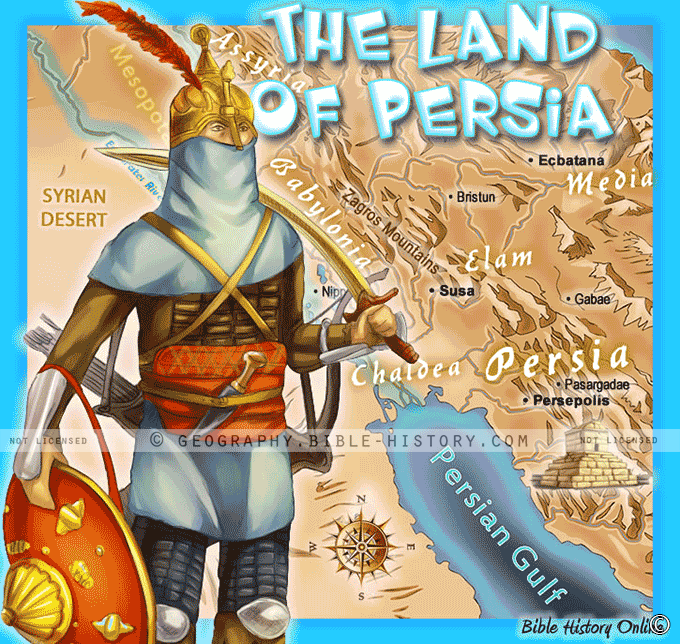
The Land of Persia, a region steeped in rich history and cultural tapestry, holds a prominent place in the annals of human civilization. Stretching across modern-day Iran, this land has witnessed the rise and fall of empires, the exchange of ideas, and the emergence of enduring traditions. Its story is one of resilience, innovation, and the preservation of a legacy that continues to captivate and inspire.
A Tapestry of Ancient Empires
Persia's history is a mosaic woven with the threads of powerful empires. From the Achaemenids to the Parthians and Sassanians, the region's rulers left an indelible mark on the world stage. Persia's embrace of multiculturalism and religious diversity made it a crucible for the interplay of ideas and cultures.
City of Persepolis: Legacy of Splendor
At the heart of Persia's historical legacy stands Persepolis, an ancient city characterized by grandeur and artistry. Founded by Darius the Great, Persepolis served as a ceremonial capital, boasting stunning palaces, intricately carved reliefs, and architectural marvels that reflect the empire's power and sophistication.
Contributions to Human Civilization
The Land of Persia has contributed immeasurably to human progress. Its scholars advanced fields like astronomy, medicine, and philosophy. Persian literature, most notably the works of poets like Rumi and Hafez, is celebrated for its depth and beauty. Persian carpets, ceramics, and other crafts are admired worldwide for their intricate designs and artistry.
Influence on Culture and Language
Persia's influence extends to language, giving birth to Farsi—a language of poetry, philosophy, and communication. The enduring legacy of Farsi is a testament to Persia's impact on linguistic and cultural realms, both within its borders and beyond.
Islamic Heritage and Civilization
The Islamic era brought new dimensions to Persia's legacy. The region played a pivotal role in the spread of Islam and the flourishing of Islamic art and scholarship. The city of Isfahan, known for its stunning architecture and urban planning, emerged as a gem of Persian-Islamic culture.
Modern Persia: A Fusion of Tradition and Progress
In the modern era, Persia continues to evolve while maintaining a strong connection to its historical roots. Iran, as it is known today, embodies a blend of tradition and progress, where ancient customs coexist with a dynamic contemporary society.
The Land of Persia, with its storied history, contributions to human civilization, and enduring cultural heritage, stands as a testament to the power of innovation, resilience, and the indomitable spirit of a people who have shaped the course of history. As we explore the Land of Persia, we journey through a realm that embodies the fusion of past and present—a land where the echoes of empires, the wisdom of scholars, and the beauty of artistry continue to inspire and captivate.
Blank Topo Map of The World
Abraham’s Journey
The Captivity of Judah (586-516 B.C.)
The Fall of Judah 586 B.C.
The Northern Kingdom of Israel
The Southern Kingdom of Judah
The Divided Kingdom
The Fertile Crescent
Ur of the Chaldees
Shechem in Old Testament Times
Prophets, Kings, and Nations
Jesus Last Passover
New Testament Israel
New Testament Places
Old Testament Israel
Provinces of the Roman Empire
Israel during David’s Kingdom
David’s Kingdom
Cities of the New Testament 4
Cities of the New Testament 3
Cities of the New Testament 2
Mediterranean Sea
Cities of the New Testament
First Century Jerusalem
Empire of David and Solomon
David’s Kingdom
Israel Under Rehoboam
Ophir and Tarshish
The Period of the Kings
Ramoth Gilead
Samaria
Solomon’s Temple
Zarephath and MT Carmel
Jabesh Gilead and Tribes
Judah in the Time of David
Kingdom of Saul
Kirjath Jearim
Michmash
Mount Gilboa in the Time of David
Nob Davids Flight
Shiloh
Israel and Judah
Assyrian Empire Under Esarhaddon
Assyrian Empire Under Sennacherib
Captivity of 10 Tribes
Events in 2 Kings
The Khabur River
Israel and Syria
Captives From Judah
Kingdom of Jeroboam
Mesha’s Kingdom
Pharaoh Necho Battles King Josiah at Megiddo
Babylonian, Mede and Persian Empires
Samaria and Nearby Territories
Syria at its Height
Hebron
Mahanaim
1949 Map of Israel With Boundaries
First & Second Journeys of Paul
Journeys of the Apostles
Paul’s Third Missionary Journey
Saul’s Journey to Damascus and Arabia
Paul’s Final Visits
Paul’s 1st Missionary Journey
Paul’s 2nd Missionary Journey
Paul’s 3rd Missionary Journey
Paul’s Voyage to Rome
Phillip Journeys to Samaria and Gaza
Judah at the Time of Amos
Empire of Alexander the Great
Israel Under the Maccabees
Galilee During Maccabees
Idumea Intertestamental Period
Kingdom of the Ptolemies
Kingdom of the Seleucids
Ptolemaic Egypt Seleucid Asia
The Roman World
Kingdom of Ptolemies and Seleucids
The World During the 6TH Century BC
Mount Horeb
The Red Sea
The Exodus
Ezra’s Journey to Restore Jerusalem
Israel and Judah During Hosea’s Time
The Ancient World
Canaan During the Time of Abraham
The City of Shechem
Supposed Location of the Garden of Eden
The Land of Israel in Genesis
The Jordan River
The Kingdom of Nimrod
Mount Ararat and Mesopotamia
The Descendants
Sodom and Gomorrah
The Kingdom of Egypt
The Hamites
The Kingdom of the Hittites
Ur of the Chaldees
Judah at the Time of Haggai
Jesus Passes Through Samaria
